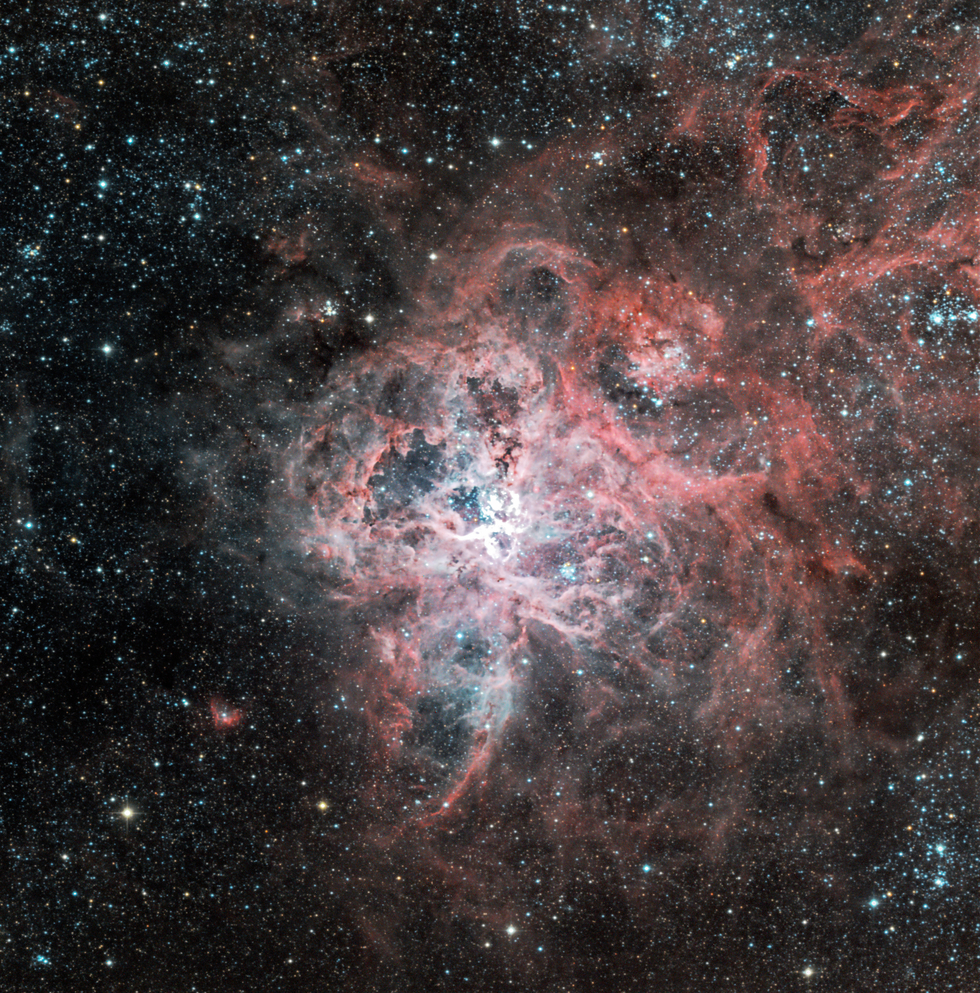Tarantula Nebula (NGC 2070)
Tarantula Nebula (NGC 2070)
LHaRGB-image of the Tarantula Nebula (NGC 3372), one of the jewels of the Southern sky, captured with the CHI-1 telescope.
Tarantula Nebula, also called NGC 2070 or 30 Doradus, is an immense H-II region (ionized-hydrogen) in the Large Magellanic Cloud, a satellite galaxy of our Milky Way system. The nebula consists of a cloud of interstellar gas - principally hydrogen - lit from within by young, hot stars that ionize the gas around them. As the atoms in the gas recombine, they emit visible light. The total mass of the nebula is about 1,000,000 solar masses, and its diameter is 550 light-years, making it one of the largest regions of ionized gas in the entire Local Group of galaxies.
Exposure time: 5 x 180s with LRGB-filters and 10 x 300s with Ha-filter.
Combined L- and Ha-data as Lum-layer for final processing in Photoshop CC.
Wanted to resolve nebulosity and (background) stars in the center of the nebula as much as possible...
Tarantula Nebula, also called NGC 2070 or 30 Doradus, is an immense H-II region (ionized-hydrogen) in the Large Magellanic Cloud, a satellite galaxy of our Milky Way system. The nebula consists of a cloud of interstellar gas - principally hydrogen - lit from within by young, hot stars that ionize the gas around them. As the atoms in the gas recombine, they emit visible light. The total mass of the nebula is about 1,000,000 solar masses, and its diameter is 550 light-years, making it one of the largest regions of ionized gas in the entire Local Group of galaxies.
Exposure time: 5 x 180s with LRGB-filters and 10 x 300s with Ha-filter.
Combined L- and Ha-data as Lum-layer for final processing in Photoshop CC.
Wanted to resolve nebulosity and (background) stars in the center of the nebula as much as possible...
SPECIFICATIONS
Telescope
CHI-1 (Planewave CDK24, f/6.5)
Camera
FLI PL9000
Location
Obstech - Observatorio El Sauce in the Rio Hurtado Valley, Chile
Date of observation
January 2020
Filters
Astrodon H-alpha and LRGB
Processing
AstroPixelProcessor & Photoshop CC (incl. AstroPanel 4.2, Astronomy Tools & Denoise Projects 3 plug-ins)


